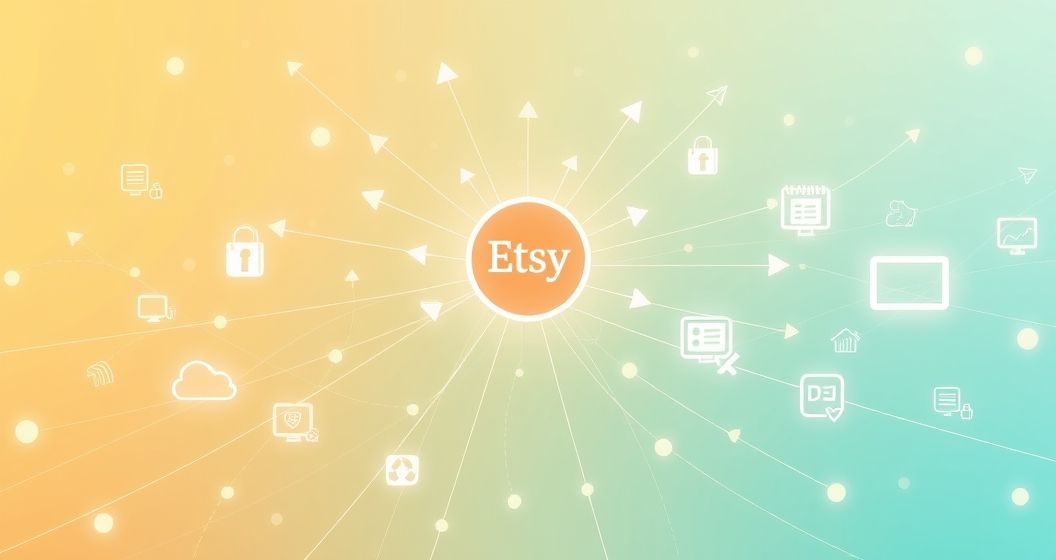In the expansive digital marketplace, Etsy stands as a unique platform for creators, artisans, and vintage collectors. However, simply listing products is often not enough to achieve significant sales and visibility. Effective Etsy marketing is crucial for distinguishing a shop in a competitive environment. This guide explores fundamental and advanced strategies designed to help sellers attract more customers, enhance their brand, and ultimately grow their business on Etsy. Understanding these marketing principles empowers sellers to reach their target audience and convert browsers into loyal buyers.
Understanding the Core of Etsy Marketing
Etsy marketing encompasses a range of activities focused on promoting a shop and its products to potential customers. It involves optimizing listings, engaging with the community, and using both on-platform and off-platform tools to increase visibility. The goal is to drive traffic to product pages, encourage purchases, and build a recognizable brand identity. A comprehensive marketing approach helps sellers stand out amongst millions of other shops, ensuring their unique creations get the attention they deserve in the bustling Etsy ecosystem. It’s about more than just selling; it’s about strategic brand building.
1. Mastering Etsy SEO Essentials for Visibility
Search Engine Optimization (SEO) on Etsy is vital for ensuring your products appear in relevant search results. This involves strategically using keywords in your titles, tags, and descriptions. Research popular search terms that buyers use to find items similar to yours and integrate them naturally. Use all 13 available tags for each listing, mixing broad terms with specific, long-tail phrases. A well-optimized listing significantly improves its chances of being discovered by potential customers, directly impacting shop traffic and sales volume. Consistent keyword research is key to adapting to buyer search trends.
2. Crafting Engaging Product Photography: Visual Appeal
High-quality product photography is arguably the most critical element in attracting buyers on Etsy. Customers cannot physically touch or inspect items, so images must convey quality, size, and detail accurately. Use bright, natural lighting and multiple angles to showcase your products effectively. Include lifestyle shots to help buyers visualize the item in use, along with scale shots to provide context. Professional-looking photos build trust and significantly increase the likelihood of a click-through and eventual purchase. Invest time in creating captivating visuals that truly represent your craftsmanship.
3. Leveraging Etsy Ads for Targeted Reach
Etsy Ads offer sellers an opportunity to promote their listings directly within Etsy search results and other high-traffic areas on the platform. These paid promotions can significantly boost product visibility, especially for new shops or specific seasonal items. Sellers can set daily budgets and target specific listings, allowing for precise control over marketing spend. Analyzing ad performance, including clicks, conversions, and cost-per-click, helps optimize campaigns for better return on investment. Consider starting with a small budget and gradually increasing it as you identify profitable strategies for your unique products.
4. Social Media Promotion Beyond Etsy
Extending your marketing efforts to external social media platforms can dramatically expand your reach. Platforms like Instagram, Pinterest, and Facebook are ideal for showcasing your products and brand story. Create visually appealing content, engage with your audience, and consistently share links back to your Etsy shop. Pinterest, with its visual search capabilities, is particularly effective for driving traffic to product pages. Building a strong social media presence helps create a loyal community around your brand, driving consistent external traffic to your Etsy listings and enhancing brand recognition.
5. Building Customer Loyalty and Encouraging Reviews
Exceptional customer service and positive reviews are powerful marketing tools. Respond promptly to inquiries, resolve issues professionally, and ensure a smooth purchasing experience. Encourage satisfied customers to leave reviews, as these provide social proof and build trust with new buyers. Consider sending a personalized thank-you note with each order or offering a small discount on future purchases to foster repeat business. Loyal customers not only make repeat purchases but also often become advocates for your brand, recommending your shop to others organically. This organic growth is invaluable for long-term success.
6. Strategic Pricing for Profitability and Perceived Value
Developing an effective pricing strategy involves more than just covering costs; it requires understanding market value and buyer perception. Factor in material costs, labor, Etsy fees, shipping, and marketing expenses when determining your base price. Then, research competitor pricing for similar items to ensure your prices are competitive yet reflect the unique value of your craft. Consider offering different price points, perhaps with variations or bundles, to appeal to a broader audience. A well-thought-out pricing strategy ensures profitability while positioning your products attractively in the market.
7. Analyzing Your Etsy Shop Performance for Growth
Etsy provides sellers with detailed analytics through the “Etsy Stats” dashboard. Regularly reviewing this data is crucial for understanding what works and what doesn’t in your marketing efforts. Monitor traffic sources, popular listings, conversion rates, and search terms that lead buyers to your shop. Identify trends, such as seasonal demand for certain products, and adjust your marketing and inventory accordingly. Data-driven decisions allow for continuous optimization of your listings, pricing, and promotional activities, ensuring sustained growth and increased sales over time. Understanding your performance metrics is a powerful advantage.
8. Collaborating with Influencers and Other Makers
Partnerships can open new avenues for exposure. Collaborating with social media influencers who align with your brand’s aesthetic can introduce your products to a wider, relevant audience. Similarly, cross-promotion with other Etsy sellers who offer complementary products can benefit both shops by tapping into each other’s customer bases. These collaborations can take many forms, from joint giveaways to shared content, creating synergistic marketing opportunities. Such partnerships are an efficient way to expand your market reach without extensive direct advertising expenses, fostering a sense of community.
9. Creating Compelling Product Descriptions
Beyond keywords, your product descriptions are an opportunity to tell your item’s story and highlight its unique benefits. Use descriptive language that evokes emotion and helps buyers imagine owning or gifting the product. Include all necessary details like dimensions, materials, care instructions, and customization options clearly. Answer potential buyer questions upfront to reduce inquiries and build confidence. A well-written description complements your stunning photos, providing the final push a customer needs to make a purchase decision and feel connected to your handcrafted item.
Sustaining Growth: Continuous Evolution in Etsy Marketing
Effective Etsy marketing is not a one-time effort but an ongoing process of learning, adapting, and refining strategies. The digital landscape and buyer preferences constantly evolve, requiring sellers to stay informed and flexible. Regularly review your performance data, experiment with new marketing tactics, and engage with the Etsy community to glean insights. By consistently optimizing your listings, enhancing your visual presentation, leveraging targeted promotions, and fostering strong customer relationships, you can build a resilient and thriving Etsy shop that stands the test of time and market changes.






